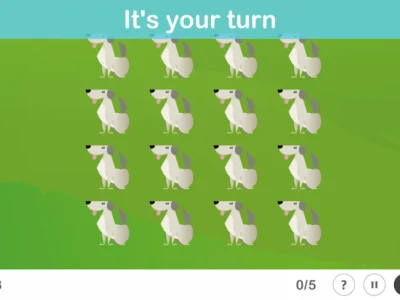Neuropsychologist Lidia García Pérez explains in this article what spatial hemineglect is
How many times have you gone to the fridge or a cupboard looking for something specific and, even though you had what you were looking for right in front of you, you didn’t see it? If it has happened to you on some occasion, it is likely that when you found it you were surprised you hadn’t seen it before. –But if it wasn’t there before… – you think.
A similar sensation is what people who suffer from spatial hemineglect often describe, in certain situations in which by changing position or perspective, they suddenly become aware of an object that has remained in the same place the whole time and had been unnoticed by them [1].
Spatial hemineglect
Spatial hemineglect is an alteration of attention, which occurs after an acquired brain injury and that prevents people from orienting and responding to stimuli or objects that lie within one half of space (specifically the half opposite the cerebral hemisphere that has been damaged), while they can attend to stimuli that lie in the other half [2,3].
Although the syndrome of spatial hemineglect or neglect can occur due to involvement of the left hemisphere, cases after a right hemisphere lesion are more frequent and severe [2,3] and it has been suggested that the best description of spatial hemineglect is an indifference to the left side of the world [4].
Spatial hemineglect from right-sided lesion
A person with spatial hemineglect from a right-sided lesion does not look or turn their head to the left, nor do they attend to visual, auditory, or tactile stimuli located on their left [3]. Thus, it is common for them to eat only from the right side of the plate, draw only the right half of objects when copying them, or read half of sentences or words without having any sensory deficit to explain it [2,3].
In a study that exemplifies the nature of this disorder [5], patients were shown a drawing of two houses arranged one above the other, which only differed in that flames and smoke came out of the left window of the lower house. When asked whether the houses were the same or different, they answered that they were the same; but when asked which one they would prefer to live in, they chose the house that was not on fire, without being able to give any particular reason.
Thus, this study showed that in spatial hemineglect from a right-sided lesion, the brain does perceive the left hemispace, but due to disruption in the pathway of that information to the brain areas that allow its integration into consciousness, the patient does not perceive it. That is, it is a failure in the conscious processing of half of the spatial information and not some kind of blindness [5].
Hemineglect affects mental representations of space
But hemineglect does not only occur with spatial information perceived from the outside; it even affects mental representations of space. In another classic experiment [6] when patients were asked to imagine that they were in a very well-known square (the Piazza del Duomo in Milan) and to describe it, they only referred to details on the right side of the square and omitted those on the left.
To rule out that this omission was due to a memory problem, they were then asked to imagine that they were positioned at the opposite end of the square and to describe it from there. They detailed what they had not previously identified, omitting the details of the part that Right Now lay to their left and that when it lay to their right they had described.
Hemi-inattention can also affect the body schema, that is, one side of one’s own body, an alteration called hemiasomatognosia [3]. When this happens, people often put on makeup or shave only half of their face, or collide with objects on one side when they walk [3,4]
The most striking aspect of hemi-inattention is that in the most severe cases, the affected person seems to have lost the concept of left; while in some cases, when the patient’s attention is directed to an object located on the neglected side, they can see and identify it without problems [4], in others, not even suggesting “look to the left” seems to make them understand what is meant [1].

Subscribe
to our
Newsletter
Rehabilitation of hemineglect
Regarding rehabilitation of hemineglect, one of the general strategies that is usually applied is to continuously draw the patient’s attention toward the side they ignore, positioning oneself to their left, speaking to them from that side, and even arranging the furniture in the home in such a way that forces the person to orient toward that side at all times. For example, placing the bed against the wall on the side they do attend to [2].
Therefore, it is also important to keep these considerations in mind during specific neuropsychological rehabilitation, when carrying out attention exercises.
NeuronUP has prepared various exercises to work on hemineglect. If you are a professional and want to try them, request a free trial of the platform:
Bibliography
- Sacks, O (1985). Seeing to the right! In: The Man Who Mistook His Wife for a Hat, pp.107-10. Barcelona:Anagrama.
- Arnedo, M, Bembibre, J. and Triviño, M. (2013). Clinical neuropsychology through case studies. Madrid: Editorial Médica Panamericana.
- Ardila, A. and Roselli, M. (2007). Clinical neuropsychology. Mexico, D. F.: El Manual Moderno.
- Ramachandran, V.S. (2008). Believing is seeing. In: The Labyrinths of the Brain, pp. 37-47. Barcelona: La Liebre de Marzo.
- Marshall, J. &Halligan, P.W. (1988). Blindsight and insight in visuo-spatialneglect. Nature, 336, 7: 766-7.
- Bisiach, E. &Luzzatti, C. (1978). Unilateral neglect of representational space. Cortex, 14: 129-33.
If you liked this post about spatial hemineglect, you may be interested in these NeuronUP posts:
“This article has been translated. Link to the original article in Spanish:”
Heminegligencia espacial: La mitad de todo







 Evaluation and Neuropsychological Rehabilitation in Aphasias
Evaluation and Neuropsychological Rehabilitation in Aphasias
Leave a Reply